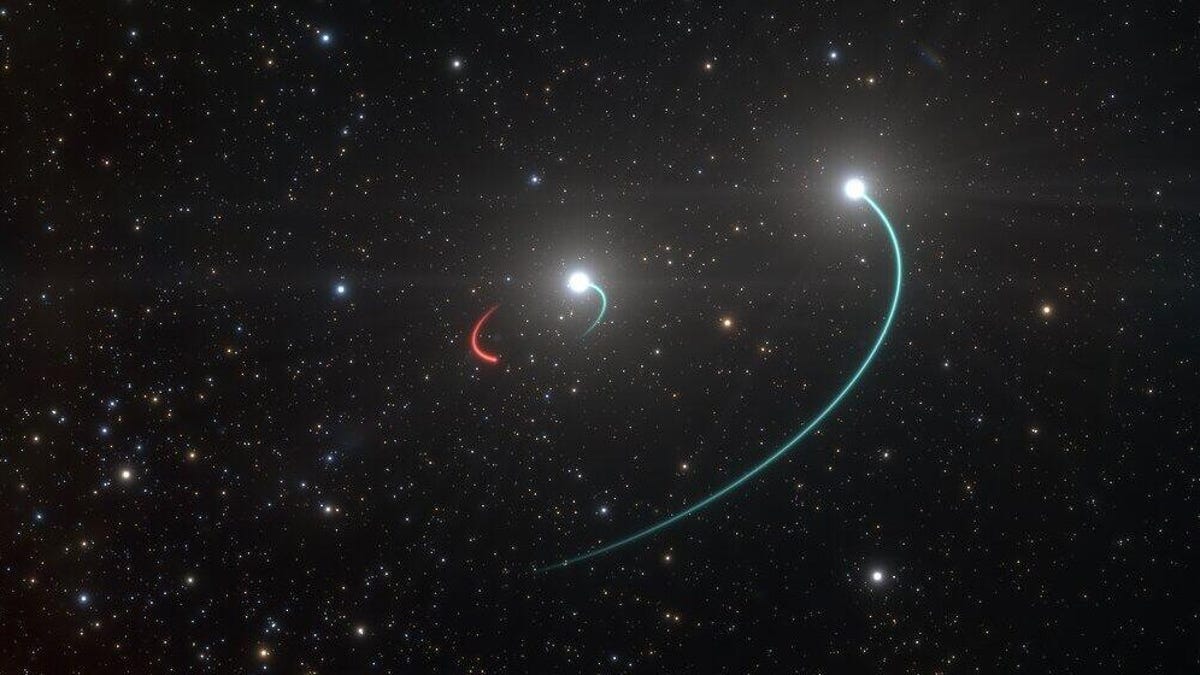Scientists discover surprisingly close black hole in an unexpected place
Don't worry. We won't fall in.

This artist's impression shows the orbit of the two stars in the HR 6819 system. The black hole orbit appears in red with its companion star in blue. The wider blue arc represents another star in the system.
A keen-eyed human in the southern hemisphere of planet Earth can spot two stars in the HR 6819 system with the unaided eye on a dark night by looking to the minor constellation Telescopium (named after a telescope). Now, that person will know she's looking toward a black hole.
A research team led by astronomers from the European Southern Observatory discovered a sneaky black hole lurking in HR 6819. The fact that the black hole's system could be seen with the naked eye came as a surprise. "This system contains the nearest black hole to Earth that we know of," said ESO's Thomas Rivinius in a release on Wednesday.
ESO said the black hole is located "just 1,000 light-years from Earth." That's cosmically close, but still incredibly far away in human terms.
The black hole in HR 6819 in the constellation Telescopium can't be seen, but the two visible stars can be spotted with the naked eye from Earth.
The scientists used a telescope at ESO's La Silla Observatory in Chile to observe the system and discovered one of the stars orbits an invisible object while the second star practices a cosmic version of social distancing by hanging out away from the others.
The mysterious hidden object is the black hole, the end result of the collapse of a massive star.
The research team published its findings in the journal Astronomy & Astrophysics on Wednesday.
The inner, visible star's orbital behavior betrayed the identity of its companion, which has a mass at least four times that of our sun. For a black hole, it's pretty chill. "The hidden black hole in HR 6819 is one of the very first stellar-mass black holes found that do not interact violently with their environment and, therefore, appear truly black," ESO said.
Black holes are hard to spot for a reason. "A black hole is a place in space where gravity pulls so much that even light can not get out. The gravity is so strong because matter has been squeezed into a tiny space," NASA has elegantly explained. We can't just snap a photo of a black hole, though the pioneering Event Horizon project unveiled the first direct image of a black hole in 2019.
The black hole in HR 6819 hints at untold wonders. Astronomers are already scoping out another system, LB-1, that may be hiding a similar secret.
"There must be hundreds of millions of black holes out there, but we know about only very few. Knowing what to look for should put us in a better position to find them," said Rivinius.

